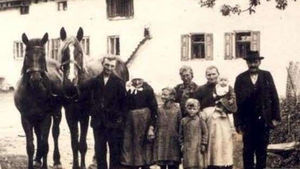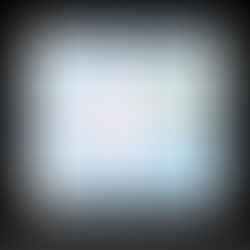
Over the past few years, I’ve been increasingly consumed with the idea in quantum mechanics and also Heisenberg’s uncertainty principle. I am fascinated with the idea that our subatomic particles can and indeed do exists in more than one place as once. Therefore, we exist in more than one place at once as well. This opens the possibility of parallel universes or the “many worlds” theory. There are an infinite number of each of us existing at the same time and believing we are the truly only individual in reality. Each of us living our lives either ever so slightly varying or infinitely different ways. Essentially, over time each and every possibility will occur.

Double Slit Experiment
The double-slit experiment, sometimes called Young’s experiment, is a demonstration that matter and energy can display characteristics of both waves and particles. In the basic version of the experiment, a coherent light source such as a laser beam illuminates a thin plate pierced by two parallel slits, and the light passing through the slits is observed on a screen behind the plate. The wave nature of light causes the light waves passing through the two slits to interfere, producing bright and dark bands on the screen — a result that would not be expected if light consisted strictly of particles. However, at the screen, the light is always found to be absorbed as though it were composed of discrete particles or photons. This establishes the principle known as wave–particle duality.
If light consisted strictly of ordinary or classical particles, and these particles were fired in a straight line through a slit and allowed to strike a screen on the other side, we would expect to see a pattern corresponding to the size and shape of the slit. However, when this “single-slit experiment” is actually performed, the pattern on the screen is a diffraction pattern, a fairly narrow central band with dimmer bands parallel to it on each side.
Similarly, if light consisted strictly of classical particles and we illuminated two parallel slits, the expected pattern on the screen would simply be the sum of the two single-slit patterns. In actuality, however, the pattern becomes wider and much more detailed, including a series of light and dark bands. When Thomas Young first demonstrated this phenomenon, it indicated that light consists of waves, as the distribution of brightness can be explained by the alternately additive and subtractive interference of wavefronts. Young’s experiment played a vital part in the acceptance of the wave theory of light in the early 1800s, vanquishing the corpuscular theory of light proposed by Isaac Newton, which had been the accepted model of light propagation in the 17th and 18th centuries. However, the later discovery of the photoelectric effect demonstrated that under different circumstances, light can behave as if it is composed of discrete particles. These seemingly contradictory discoveries made it necessary to go beyond classical physics and take the quantum nature of light into account. The double-slit experiment (and its variations) has become a classic thought experiment for its clarity in expressing the central puzzles of quantum mechanics. Richard Feynman was fond of saying that all of quantum mechanics can be gleaned from carefully thinking through the implications of this single experiment.

WITH PARTICLE DETECTORS AT THE SLITS
The double-slit apparatus can be modified by adding particle detectors positioned at the slits. This enables the experimenter to find the position of a particle not when it impacts the screen, but rather, when it passes through the double-slit — did it go through only one of the slits, as a particle would be expected to do, or through both, as a wave would be expected to do? Numerous experiments have shown, however, that any modification of the apparatus that can determine which slit a particle passes through reduces the visibility of interference at the screen, thereby illustrating the complementarity principle: that light (and electrons, etc.) can behave as either particles or waves, but not both at the same time. An experiment performed in 1987 produced results that demonstrated that information could be obtained regarding which path a particle had taken, without destroying the interference altogether. This showed the effect of measurements that disturbed the particles in transit to a lesser degree and thereby influenced the interference pattern only to a comparable extent.
There are many methods to determine whether a photon passed through a slit, for instance by placing an atom at the position of each slit. Interesting experiments of this latter kind have been performed with photons and with neutrons.
DELAYED CHOICE AND QUANTUM ERASER VARIATIONS
The delayed-choice experiment and the quantum eraser are sophisticated variations of the double-slit with particle detectors placed not at the slits but elsewhere in the apparatus. The first demonstrates that extracting “which path” information after a particle passes through the slits can seem to retroactively alter its previous behavior at the slits. The second demonstrates that wave behavior can be restored by erasing or otherwise making permanently unavailable the “which path” information.
COPENHAGEN INTERPRETATION OF THE EXPERIMENT
Like the Schrödinger’s cat thought experiment, the double-slit experiment is often used to highlight the differences and similarities between the various interpretations of quantum mechanics.
The Copenhagen interpretation is a consensus among some of the pioneers in the field of quantum mechanics that it is undesirable to posit anything that goes beyond the mathematical formulae and the kinds of physical apparatus and reactions that enable us to gain some knowledge of what goes on at the atomic scale. One of the mathematical constructs that enables experimenters to predict very accurately certain experimental results is sometimes called a probability wave. In its mathematical form it is analogous to the description of a physical wave, but its “crests” and “troughs” indicate levels of probability for the occurrence of certain phenomena (e.g., a spark of light at a certain point on a detector screen) that can be observed in the macro world of ordinary human experience.
The probability “wave” can be said to “pass through space” because the probability values that one can compute from its mathematical representation are dependent on time. One cannot speak of the location of any particle such as a photon between the time it is emitted and the time it is detected simply because in order to say that something is located somewhere at a certain time one has to detect it. The requirement for the eventual appearance of an interference pattern is that particles be emitted, and that there be a screen with at least two distinct paths for the particle to take from the emitter to the detection screen. Experiments observe nothing whatsoever between the time of emission of the particle and its arrival at the detection screen. If a ray tracing is then made as if a light wave (as understood in classical physics) is wide enough to take both paths, then that ray tracing will accurately predict the appearance of maxima and minima on the detector screen when many particles pass through the apparatus and gradually “paint” the expected interference pattern.
Path-Integral formulation
The Copenhagen interpretation is similar to the path integral formulation of quantum mechanics provided by Feynman. The path integral formulation replaces the classical notion of a single, unique trajectory for a system, with a sum over all possible trajectories. The trajectories are added together by using functional integration.
Each path is considered equally likely, and thus contributes the same amount. However, the phase of this contribution at any given point along the path is determined by the action along the path (see Euler’s formula):
Apath(x,t) = eiS(x,t)
All these contributions are then added together, and the magnitude of the final result is squared, to get the probability distribution for the position of a particle:

As is always the case when calculating probability, the results must then be normalized:

To summarize, the probability distribution of the outcome is the normalized square of the norm of the superposition, over all paths from the point of origin to the final point, of waves propagating proportionally to the action along each path. The differences in the cumulative action along the different paths (and thus the relative phases of the contributions) produces the interference pattern observed by the double-slit experiment. Feynman stressed that his formulation is merely a mathematical description, not an attempt to describe a real process that we cannot measure.

RELATIONAL INTERPRETATION
According to the relational interpretation of quantum mechanics, first proposed by Carlo Rovelli, observations such as those in the double-slit experiment result specifically from the interaction between the observer (measuring device) and the object being observed (physically interacted with), not any absolute property possessed by the object. In the case of an electron, if it is initially “observed” at a particular slit, then the observer–particle (photon–electron) interaction includes information about the electron’s position. This partially constrains the particle’s eventual location at the screen. If it is “observed” (measured with a photon) not at a particular slit but rather at the screen, then there is no “which path” information as part of the interaction, so the electron’s “observed” position on the screen is determined strictly by its probability function. This makes the resulting pattern on the screen the same as if each individual electron had passed through both slits. It has also been suggested that space and distance themselves are relational, and that an electron can appear to be in “two places at once” – for example, at both slits – because its spatial relations to particular points on the screen remain identical from both slit locations.

The Double Slit Experiment
Double Slit Experiment Quantum Mechanics
Brian Cox Explains Quantum Mechanics







Comments